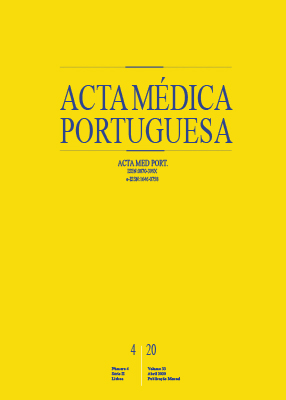A Potentially Fatal Aphrodisiac: Cantharidin Poisoning
DOI:
https://doi.org/10.20344/amp.11567Keywords:
Aphrodisiacs, Cantharidin/toxicity, Diptera, Poisoning/etiologyAbstract
Cantharidin is a toxin extracted from coleoptera beetles, commonly known as ‘Spanish fly’. Traditionally it was used as an aphrodisiac, a vesicant or as an abortifacient. Intoxication by this substance has been widely reported, generally associated with gastrointestinal complications, such as digestive hemorrhage, and genitourinary disorders, such as hematuria and acute kidney injury. The authors describe the case of a 51-year old male patient who developed severe cantharidin poisoning after ingesting a preparation (‘tea formulation’) containing the substance. The patient reported a burning sensation in his oral cavity, diarrhea and hematuria, having sustained acute kidney injury and atypical neurological symptoms. Due to the lack of an antidote, the available treatment options are reduced to supportive measures. This case strengthens the need for a thorough medical history to ascertain the use of ‘natural’ products and medicinal herbs (i.e. of unregulated origin), and the importance of educating the community to their potential toxicity.
Downloads
Downloads
Published
How to Cite
Issue
Section
License
All the articles published in the AMP are open access and comply with the requirements of funding agencies or academic institutions. The AMP is governed by the terms of the Creative Commons ‘Attribution – Non-Commercial Use - (CC-BY-NC)’ license, regarding the use by third parties.
It is the author’s responsibility to obtain approval for the reproduction of figures, tables, etc. from other publications.
Upon acceptance of an article for publication, the authors will be asked to complete the ICMJE “Copyright Liability and Copyright Sharing Statement “(http://www.actamedicaportuguesa.com/info/AMP-NormasPublicacao.pdf) and the “Declaration of Potential Conflicts of Interest” (http:// www.icmje.org/conflicts-of-interest). An e-mail will be sent to the corresponding author to acknowledge receipt of the manuscript.
After publication, the authors are authorised to make their articles available in repositories of their institutions of origin, as long as they always mention where they were published and according to the Creative Commons license.









